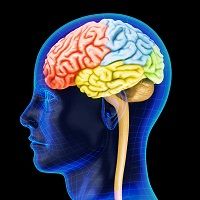Researchers Identify the Differences Between Autistic and Non-Autistic Brains
A new methodology for analyzing magnetic resonance imaging (MRI) has demonstrated the difference between autistic and non-autistic brains for the first time, according to a study published in Brain.

A new methodology for analyzing magnetic resonance imaging (MRI) has demonstrated the difference between autistic and non-autistic brains for the first time, according to a study published in Brain.
Researchers from the University of Warwick in the United Kingdom developed the Brain Wide Association Analysis (BWAS), in order to create panoramic views of the whole brain and provide scientists with accurate three dimensional brain models to study. BWAS was then used to identify regions of the brain that may significantly impact or contribute to symptoms of autism.
BWAS analyzes more than one billion individual pieces of data from nearly 1,000 patients, the researchers explained. The analysis system covers nearly 50,000 different areas of the brain (called voxels), which comprise a functional MRI (fMRI) scan and highlights the interconnectivity.
Then, the researchers were able to compile, compare, and contrast the most accurate computer brain models for both autistic and non-autistic brains. Previous methods for processing this data were restricted to modeling only certain areas at a time, the researchers continued.
After collecting the data and analyzing the images, the investigators concluded the key differences involved brain functions in cases of autism.
“We identified in the autistic model a key system in the temporal lobe visual cortex with reduced cortical functional connectivity,” explained lead BWAS developer Jianfeng Feng in a press release. “This region is involved with the face expression processing involved in social behavior. This key system has reduced functional connectivity with the ventromedial prefrontal cortex, which is implicated in emotion and social communication.”
Another key system relating to reduced cortical function connectivity the researchers were able to identify was part of the parietal lobe implicated in spatial functions. The two types of functionality, the authors suggest, are facial expression related and of one’s self and the environment. These are important components of the computations behind a person’s mind, the authors purport, because the reduced connectivity within the brain regions may contribute heavily into the development and symptoms of autism.
The investigators believe that BWAS can possibly isolate areas within the brain involved in the onset of other cognitive problems in diseases such as obsessive compulsive disorder (OCD), attention deficit hyperactivity disorder (ADHD), and schizophrenia.
“We used BWAS to analyze resting state fMRI data collected from 523 autistic people and 452 controls, Feng explained. “The amount of data analyzed helped to achieve the sufficient statistical power necessary for this first voxel based, comparison of whole autistic and non-autistic brains. Until the development of BWAS this had not been possible. BWAS tests for differences between patients and controls in the connectivity of every pair of voxels at a whole brain level.
Unlike previous seed based or independent components based approaches, this method has the great advantage of being fully unbiased in that the connectivity of all brain voxels can be compared, not just selected brain regions.”